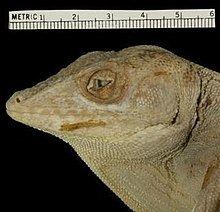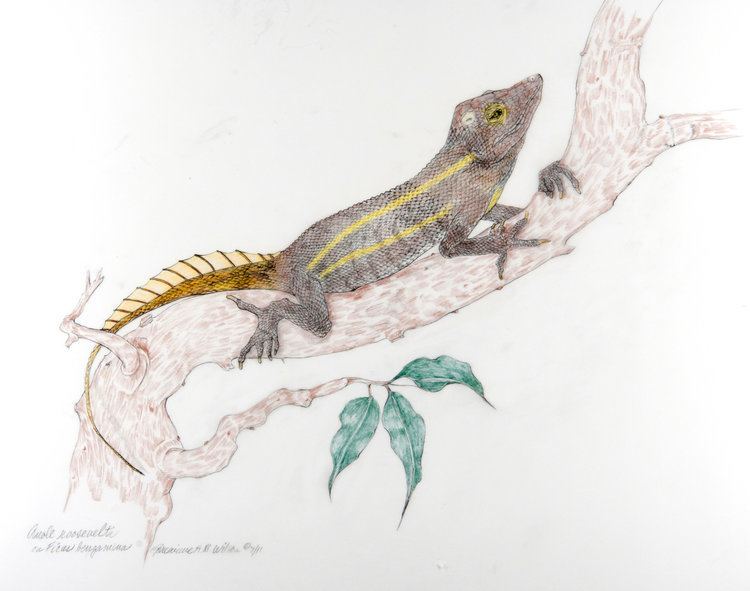Kingdom Animalia Subphylum Vertebrata Order Squamata Scientific name Anolis roosevelti | Phylum Chordata Class Reptilia Suborder Iguania Rank Species | |
Similar Anolis cuvieri, Anolis poncensis, Anolis cooki, Anolis stratulus, Jamaican giant anole | ||
The Culebra Island giant anole (Anolis roosevelti ) is an extremely rare or possibly extinct species of lizard of the genus Anolis in the family Dactyloidae.
Contents

Taxonomy and etymology

The Culebra Island giant anole was first described in 1931 by American zoologist Chapman Grant, grandson of U.S. President Grant. It is named in honor of Theodore Roosevelt, Jr., who was the governor of Puerto Rico at that time. It was initially described as Anolis roosevelti but some have suggested it should be transferred into the genus Xiphosurus in 2012. However, this new classification system is highly controversial because it creates polyphyletic groups in the genus Anolis. Therefore, the new classification system of Anolis has not been universally accepted.
Geographic range
Anolis roosevelti is endemic to Culebra Island in Puerto Rico.
Description

A. roosevelti can reach a snout-to-vent length (SVL) of 160 mm (6.3 in). The color of the body is brown-grey, while the tail has a yellow-brown hue and the abdomen is whitish. The throat fan varies from gray on the upperparts to yellow on the underparts, and the eyelids are yellow. A further feature are two long drawn-out lines on both sides of the body; one starts at the ear, the other at the shoulder.
Habitat
A. roosevelti lives in forested zones on the slopes of Mt. Resaca.
Threats

Though A. roosevelti was only observed again in 1932 after its discovery, there have been unconfirmed sightings since 1973 (the last one in 1978). Some experts believe that it might still exist. It preferred a habitat with gumbo-limbo and ficus trees because it fed from the fruits of the trees. Due to human activities the habitat was almost destroyed; only a few specimens of the Culebra Giant Anole can be seen in museums. It was listed as federally endangered in the Endangered Species Act in 1977.
